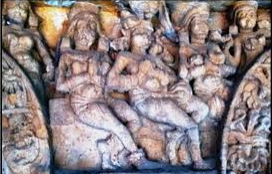Rajasthani folk dance forms

RAJASTHANI FOLK DANCE Kalbelia is a folk dance executed by the women of the kalbelia community of rajasthan. The dance movements and costumes are alike to serpents. The most admired musical instuments of this dance form is 'BEEN' (wind instrument played by snake chain). In 2011, unesco carved kalbelia folk songs and dances in the Representative list of the intangible cultural heritage of humanity. Ghoomar is probably the most popular folk dance in india. This dance form was introduced by the bhill tribe, and later adopted by the royal communities of rajasthan, including rajputs. It is erfomed by women on special events and festivals, such as the arrival of a newlywed bride at her marital house, holi and teej.The women wear traditional outfit, which is ghagra(a long, swirling skirt) and kanchli or choli (a blouse). To complete the ensemble, a veil is worn covering the face. The beauty of this folk genre is in its graceful move...




